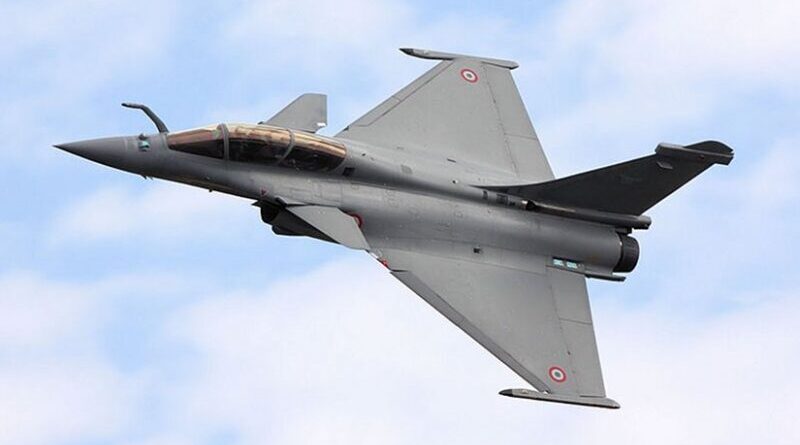A New Shield For Indonesia: Implications For The Region – OpEd
By Gufron Gozali and Rayhan Syahfa*
Not long ago, the top-tier meeting between Indonesia’s Defense Minister, Prabowo Subianto and Florence Parly, French Defense Minister in Jakarta ended with the purchase of the fourth most expensive jet fighter in the world – Dassault Rafale — and a plan to buy the French Submarines, the Scorpene as the PT PAL, Indonesia’s naval group signed a MoU with France’s naval group.
The contract signed by Prabowo was for the first six Rafale and later for the another 36. This move was seen as a remarkable phase of relations between Paris and Jakarta in terms of military cooperation. Shortly after, the Pentagon stated that Washington has approved the plan to sell 36 of the F-15EX to Indonesia.
Back in June 2021, Prabowo’s masterplan to modernize the Indonesian military with a $125 billion budget sparked debate. On one side of the coin, Prabowo suggested that this policy is justified due to inadequate condition of Indonesian armaments, yet on the other side, opposing voices expressed concern that the budget is overly large.
With so many domestic economic needs following the pandemic, billions of dollars would be better off spent elsewhere, goes their arguement. Conversely, according to the logic of Prabowo Subianto, you either spend big or go home.
Before going any further, it should be noted that the current military assets and equipment in the area are not yet fully developed. Only 50% of Indonesian weapons are still in good condition, as noted in the tragedy of the sinking of the aging KRI Nanggala in 2021. Bukhan is only a matter of age, 55% of Indonesia’s defense budget in 2021 is used for salaries and only 29% is used for the purchase of defense equipment. Of course, this purchase is a new hope for Indonesia’s defense.
The question inevitably arises as to why Indonesia doesn’t simply also turn to China or even Russia in purchasing military assets. Indonesia prefers Western made fighter jets and naval assets compared to Chinese and Russian made assets. Russian made fighter jets are known to have high maintenance costs. And in a hypothetical war with China, do you really want to have dogfights flying Chinese made fighter jets?
The shocking move revealed Jakarta’s plan to revitalize its air armaments in significant strides and could possibly be a “sudden” response towards ongoing tensions in the South China sea –- or just only due to aging armaments of the Indonesian military.
Reflecting on the relations lately between Indonesia and China in the South China Sea (SCS), ASEAN countries’ military expenditure and capabilities and also facing numbers of aging armaments, surely explains the possible reasons behind those purchases. Despite the remarkable move from Jakarta, questions remain as to whether it would create “something” with China as Beijing appears to increase its “aggression” to reach Southeast Asia using military cooperation and could it change the regions’ military roadmap?
China also offers an interesting case study. While it is objectively a security threat to some ASEAN countries, it does provide a lot of military arms sales to countries in the region. China is the largest weapons supplier to Cambodia; is agreeing to hold military drills with Singapore; sold naval assets to Malaysia; sold Thailand three submarines in 2017; and sells hundreds of millions of dollars’ worth of arms to the Philippines.
The implication of the move by Jakarta could be seen either internal and external. As conflict in the South China Sea may erupt at any time, it is important for Indonesia to modernize its fleet, adding with Singapore that recently purchased Uncle Sam’s F-35B, one of the fifth generation of jet fighters. The unpredictable situation in the South China Sea forced the Indonesian military to be well-prepared for any possibilities. Moreover, disturbances made by China also have to be taken into account to prevent this kind of thing from happening in the future.
Hence, the purchase of the Rafale, Scorpene, F-15EX and all the related-equipments could also implicitly state a few things. Firstly, Indonesia prefers armaments from the US and its allies compared to China’s J-20 or Russia’s SU-35, though CAATSA might have a huge role in this terms. The Sukhoi is known to have expensive maintenance cost, reflecting on the current TNI-AU’s SU-27 and SU-30. Secondly, Indonesia will have a better military capacity to be able to deal with any possible disturbances.
However, a more interesting fact from the SIPRI report, from 1999 to 2018, China was not included in the top five main defense equipment suppliers for Indonesia. This can be a simple example of how important Indonesia is for the US and its allies to maintain their axis in the Southeast Asian region, balancing China’s influence in terms of military cooperation.
As a conflict in the South China Sea could erupt at any time, it is important for Indonesia to modernize its Air Force assets. Furthermore, it is also possible that in the future, countries in Southeast Asia will begin to prioritize defense and security higher than ever — we are not talking about the possibility of a balance of power in the region, are we?
*Gufron Gozali and Rayhan Syahfa are research assistants from Universitas Islam Indonesia.

